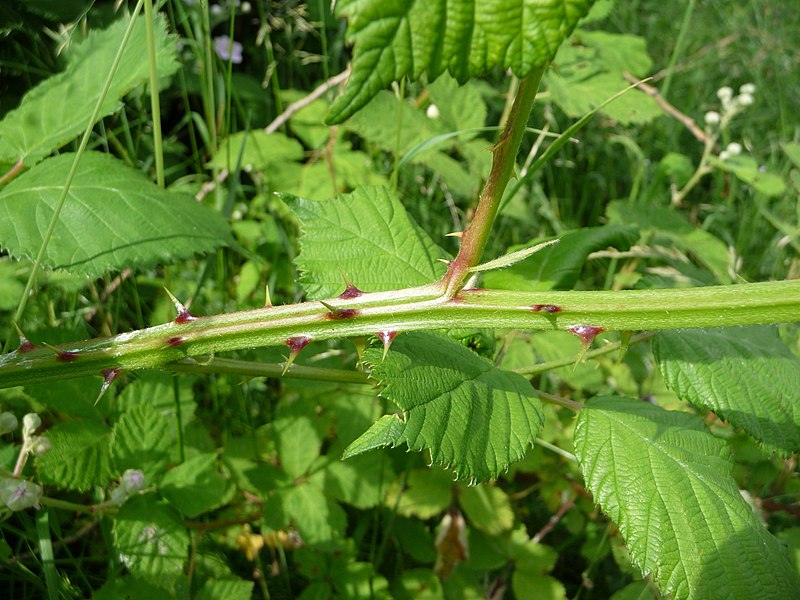The Hidden Dangers of Himalayan Blackberry: Thorns, Allergies, and Wildlife Impact
Understanding the Risks Posed by Himalayan Blackberry in Victoria, BC
Need help with your yard? Get your free quote today!
Get a Free Quote!
Thick thorns and dense growth make Himalayan blackberry a hazard to humans and wildlife.
Introduction
The Himalayan blackberry (Rubus armeniacus) is more than just an invasive plant in Victoria, BC—it's a hidden danger lurking in backyards, parks, and natural areas. While its juicy berries may seem appealing, this aggressive species poses significant risks to humans, pets, and local wildlife. From sharp thorns that can cause serious injuries to allergens that trigger reactions, understanding these hazards is crucial for homeowners and communities. In this article, we delve into the physical dangers of Himalayan blackberry and its impact on our environment, highlighting why effective removal by professionals like Ascent Yard Care is essential.
The Physical Dangers to Humans
Sharp Thorns and Injury Risks
Thorn Characteristics:
- Size and Strength: Thorns can be over 1 cm long, rigid, and extremely sharp.
- Density: Canes are covered densely with thorns, making contact almost unavoidable when near the plant.
Injury Types:
- Cuts and Scratches: Even brief contact can result in painful lacerations.
- Puncture Wounds: Thorns can penetrate deeply, increasing infection risks.
- Eye Injuries: Thorns at eye level pose a serious threat, especially for children.
Complications:
- Infections: Bacteria on thorns can enter wounds, leading to cellulitis or other infections.
- Scarring: Deep cuts may result in permanent scars.
Allergic Reactions and Skin Irritation
Plant Sap Irritants:
- Contact Dermatitis: Some individuals may experience skin irritation upon contact with sap or hairs on the leaves and stems.
- Symptoms: Redness, itching, swelling, and blisters.
Pollen Allergies:
- Allergenic Pollen: During flowering, pollen may trigger allergic reactions in sensitive individuals.
- Symptoms: Sneezing, runny nose, itchy eyes, and respiratory discomfort.
Risks to Children and Pets
Curiosity Hazards:
- Children: May be unaware of the dangers and suffer injuries while playing near or touching the plant.
- Pets: Dogs and cats can get thorns embedded in their paws or skin.
Restricted Play Areas:
- Loss of Safe Space: Dense growth can overtake yards, limiting safe areas for outdoor activities.
The Impact on Wildlife
Habitat Disruption
Displacement of Native Plants:
- Loss of Biodiversity: Himalayan blackberry outcompetes native flora, reducing habitat quality.
- Impact on Food Sources: Native plants that provide essential nutrients to local wildlife are diminished.
Altered Ecosystems:
- Monocultures: Dense thickets create uniform habitats unsuitable for many species.
- Soil Changes: The plant can alter soil composition, affecting other plant growth.
Threats to Animals
Physical Barriers:
- Movement Restriction: Dense growth hinders the movement of small mammals and ground-nesting birds.
- Entanglement Risks: Animals can become trapped in the thorny canes, leading to injury or death.
Predation and Nesting Challenges:
- Exposure: Birds and other wildlife may find it harder to hide from predators.
- Nesting Sites: The replacement of native shrubs reduces suitable nesting areas.
Attraction of Unwanted Wildlife
Rodent Habitats:
- Shelter: Thickets provide ideal shelter for rodents like rats, which can become pests.
- Disease Spread: Increased rodent populations may lead to higher risks of disease transmission to humans and pets.
Environmental Hazards
Fire Risk
Fuel Accumulation:
- Dead Canes: Dry, dead plant material accumulates within thickets.
- Fire Hazard: Increases the risk and potential severity of wildfires, especially during dry seasons.
Soil Erosion
Root Removal Consequences:
- Erosion After Removal: Improper removal can lead to soil destabilization and increased erosion.
- Impact on Waterways: Sedimentation from erosion can harm aquatic ecosystems.
The Importance of Professional Removal
Challenges of DIY Removal
- Safety Risks: Handling thorny plants without proper equipment can lead to injuries.
- Incomplete Removal: Failure to remove roots can result in rapid regrowth.
- Disposal Issues: Improper disposal may spread the plant further.
Benefits of Professional Services
Expertise and Safety
- Protective Equipment: Professionals use specialized gear to prevent injuries.
- Trained Techniques: Knowledge of safe handling and removal methods minimizes risks.
Effective Eradication
- Comprehensive Removal: Ensures both above-ground canes and root systems are eliminated.
- Preventing Regrowth: Use of organic herbicides targets residual roots.
Environmental Considerations
- Wildlife Protection: Methods that minimize disruption to non-target species.
- Erosion Control: Implement strategies to stabilize soil post-removal.
How Ascent Yard Care Addresses These Dangers
Our Safe and Effective Removal Process
Assessment and Planning:
- Identify areas where Himalayan blackberry poses the greatest risks.
- Develop a tailored removal strategy prioritizing safety.
Protective Measures:
- Equip our team with appropriate protective clothing and tools.
- Establish safety zones to protect clients and passersby during removal.
Mechanical Removal:
- Carefully cut and remove canes, avoiding unnecessary disturbance.
- Dispose of plant material responsibly to prevent spread.
Root System Elimination:
- Remove roots to prevent regrowth, using methods that minimize soil disruption.
Organic Herbicide Application:
- Apply eco-friendly treatments to eradicate remaining roots.
Site Restoration:
- Restore the area with native plants that support local wildlife.
- Implement erosion control measures if necessary.
Commitment to Client and Environmental Safety
- Education: Inform clients about potential hazards and preventive measures.
- Follow-Up Support: Monitor treated areas to ensure safety and effectiveness.
- Community Engagement: Participate in initiatives to promote safe environments.
Success Story: Ensuring Safety in a School Playground
Situation: A local elementary school's playground was bordered by overgrown Himalayan blackberry bushes, posing risks to children during playtime.
Actions Taken by Ascent Yard Care
- Immediate Response: Prioritized the project due to the safety concerns.
- Safety Planning: Coordinated with school officials to schedule removal during off-hours.
- Comprehensive Removal: Eliminated the blackberry bushes safely and efficiently.
- Educational Outreach: Provided information to staff and students about identifying and avoiding hazardous plants.
Results
- Safe Play Environment: The playground became free of dangerous thorns and allergens.
- Peace of Mind: Parents and staff felt reassured about the children's safety.
- Enhanced Aesthetics: The area was beautified with native plants.
"Ascent Yard Care's professionalism and focus on safety made a significant difference. Our students can now enjoy the playground without worry."
— Principal Emily R., Victoria Elementary School
Tips for Homeowners
Recognize the Dangers
- Identify the Plant: Learn to recognize Himalayan blackberry to avoid accidental contact.
- Educate Family Members: Ensure children understand not to touch or play near the plant.
Avoid DIY Removal
- Safety Risks: Without proper equipment and training, removal can be hazardous.
- Ineffectiveness: Incomplete removal may exacerbate the problem.
Regular Monitoring
- Property Inspections: Regularly check your property for signs of Himalayan blackberry growth.
- Early Intervention: Address small infestations promptly to prevent spread.
Contact Ascent Yard Care for Safe Removal
Protect your family, pets, and local wildlife by choosing professional Himalayan blackberry removal services.
